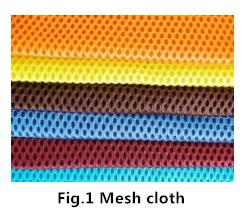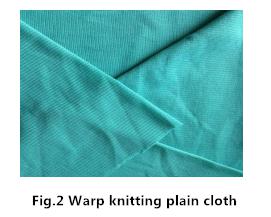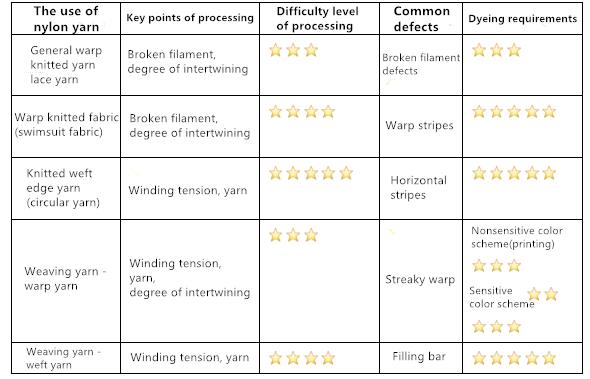The product usage of the spinning workshop is reflected on the yarn label. It is mainly divided into two categories: general purpose and special purpose. The general purpose yarn is not specially marked on the label, and the special purpose yarn will be specified on the label according to its purpose. The general purpose is to make warp-knitted plain cloth, warp-knitted mesh, lace, hosiery, and POY post-spinning. For general purposes, only hosiery is weft-knitted, and the rest of the warp-knitted plain fabric, warp-knitted mesh and lace are all warp-knitted. Special purpose yarns include woven warp yarn (J), woven weft yarn (W), ply yarn (H), high-strength yarn (H), ply woven weft yarn (HW), covered yarn (K), circular knitting (Y) and narrow fabric weaving (Z).
When nylon 6 filament is used for back-end processing, when used as warp knitting yarn or woven warp yarn, it needs to be warped into warp beams or weaving beams. Warping: The process of winding a certain number of warp yarns on the warp beam or weaving beam in parallel according to the specified length and width. Warping can be processed into weaving shafts required for weaving, or it can be processed into warp knitting processing into required warp beams (also called pan heads when used for warp knitting processing). In the process of warping, the package silk cake is first unwound and then wound into a warp beam. The winding tension will be adjusted and balanced during this process. Part of the tension difference between the silk cakes will be eliminated in this process. Therefore, the winding tension of nylon 6 filaments used as woven warp yarns or warp knitting yarns is not as stringent as weft knitting or woven weft yarns.
1. Nylon 6 filament is used for knitting warp knitting
Nylon 6 filament is used for warp knitting, which is commonly referred to as warp knitting yarn, and is the most common use of nylon filament. In Changle, the biggest use of nylon 6 filament yarn is warp knitting to make lace and warp knitted fabrics. Lace is a common type of warp knitting and is mainly used as an auxiliary material in garment processing. Therefore, lace yarn is generally a kind of warp knitting yarn. The warp knitting process will also be processed into some large surface materials for clothing, such as mesh cloth and warp knitting plain cloth.


The package nylon 6 filament produced in the spinning workshop must be warped into a warp beam (pan head) before being used for warp knitting. During warping, hundreds of silk cakes are unwound at the same time, and then are wound on the same warp beam at the same time. In this way, the tension difference between the silk cakes and the silk cakes can be adjusted. Therefore, the warp knitting yarn can unwind the silk cakes. The winding tension requirement is not as strict as the weft knitting yarn. However, warp knitting yarns require relatively high network fastness. If the network fastness is not high, when the yarn is rubbed against the crochet hook, the yarn will loosen, the tension will fluctuate, and even form broken filament and fuzziness.
The biggest problem of warp knitting yarns is the fuzziness and broken filaments. The spinning production process must be strictly controlled and adjusted to reduce the filaments of the raw yarn. In terms of dyeing performance, ordinary warp knitted fabrics – lace fabrics will be more uniform in color, and there will be relatively fewer dyeing problems. However, when warp-knitted yarn is interwoven with spandex to make warp-knitted plain cloth and swimwear fabrics, or due to fabric structure, warping factors, spandex, etc., there will be relatively more dyeing abnormalities.
2. Nylon 6 filament is used for weft knitting processing
Nylon 6 filaments are used for weft knitting, which is commonly referred to as circular knitting yarn. In the process of use, they are generally used in groups hung on the circular machine. When shipping, customers generally ask for them in groups, too. Relatively speaking, circular knitting machines have relatively high requirements for dyeing. In order to minimize possible dyeing abnormalities, workshops generally package and receive a group separately, and then deliver them group by group. And the customers hang them group by group on the circular knitthing machine for use, thus reducing the difference among the spinning positions. In addition, when the workshop performs dyeing inspection on the produced products, it uses the weft knitting process to weave the garter, and then dye it to determine whether there is any color difference. The common products of weft knitting are women's stockings and swimwear cloth for summer.
As weft-knitted products form loops in the horizontal direction, when making some highly sensitive color products, the most likely problem is horizontal stripes. Horizontal stripes refer to irregular stripes with different widths and different depths on the surface. The reasons for the horizontal stripes are many and complex. From the perspective of the raw material itself, uneven yarn thickness, uneven unwinding tension, and uneven fiber internal structure may cause horizontal cleats. Therefore, special attention will be paid to these three aspects in the spinning production process. In addition, mixing or wrong use of yarns of different batches may also cause horizontal cleats. In addition, relatively speaking, weft-knitted products have higher requirements for dyeing, and the possibility of problems is greater. The production process will also make some special adjustments to its use characteristics.
3. Nylon 6 filament is used for weaving process as warp yarn
In the weaving process, sometimes it is subdivided according to the weft insertion method used during weaving, such as gripper-projectile loom, rapier loom, air jet loom and water jet loom. Nylon 6 filaments are often used for weaving on water jet looms.
When nylon 6 filament is used in weaving process, it can be used as warp yarn or weft yarn. When it is used as warp yarn, the problem that customers often encounter is streaky warp. The streaky warp defect is the shadow stripes formed by the difference in the color absorption of the fabric when the fabric is dyed due to factors such as the warp yarn material or tension. It shows that the whole warp yarn is regularly or irregularly bright and dark in the warp direction of the fabric. Multiple shadow stripes may produce slight bubbles, and it will be more obvious after dyeing by streaky warp defects. If it is made into clothing, it will seriously affect the appearance, and the level and style will be significantly reduced. Generally, it is not suitable for use as fabrics, and can only be used as low-grade clothing linings.
There are many reasons for the production of streaky warp. From the perspective of storage and use of raw materials: (1) The batch numbers of raw materials are different, even if the specifications are the same (such as the same denier and F number), their affinity for dyes is different. If mixed as warp yarn, streaky warp will be produced; (2) Even if it is the same batch of raw materials, due to the large difference in production time or too long storage time, subtle chemical changes occur in the yarn, which affects the degree of affinity to dyes and produces streaky warp; (3) The improper storage of raw materials. Some of the raw materials will affect their dyeing performance due to sun exposure or moisture or bad gas.
In addition, in terms of yarn processing, the reason of network processing will also cause streaky warp. Because the net distance and the strength of the dots are different, the light refraction is also different. The net wires of different net distances and strength cannot be mixed, otherwise it will also produce streaky warp;
In addition, the difference in winding tension is too large, which will cause tight and loose winding of the packaged yarn cake, even if it is not completely eliminated by warping, such as mixed use in warping will cause streaky warps in the fabric. In the warping process, different sizes of yarn cakes cannot be mixed. Small bobbins with small radius, large unwinding tension while large bobbins with large radius, low unwinding tension, so the differences in bobbin size may also produce streaky warp;
When nylon 6 filament is used as a woven warp yarn, in terms of dyeing performance, if it is dyed with ordinary colors, or for subsequent printing products, the dyeing requirements are generally not high and the possibility of problems is low. But when it is used for dyeing some sensitive colors, the possibility of abnormal dyeing is larger, and the dyeing requirements are relatively high.
4. Nylon 6 filament is used for weaving processing as weft yarn
When used as weft yarn, because the yarn cake is used for weft insertion weaving one by one, if the winding tension is uneven, the weft yarn will be unevenly distributed on the fabric surface during the beating process, which may cause filling bar, which refers to the weft direction of the fabric presents an obvious edge, and the appearance is different from the adjacent normal fabric. Severe uneven weft insertion can even cause weft breakage and affect weaving efficiency. The cause of the filling bar is similar to that of the bar in weft knitting. From the perspective of raw materials, the focus is on the evenness of the yarn, the tension of the yarn cake winding and the uniformity of the internal fiber structure.
Relatively speaking, the dyeing requirements of weft yarns are higher than that of warp yarns, and the possibility of problems is greater. When doing some high-sensitivity dyeing, there may be a greater probability of abnormalities. The difficulty of production and processing will be relatively greater. In summary:

5. Nylon 6 filament is used for other special products
Covered yarn: filament used for covered yarn mainly refers to single covered yarn and double covered yarn.
Single-covered yarn refers to one long fiber as the core, and the other long fiber is wound in a unidirectional spiral. Usually the core yarn is spandex, and the sheath is made of nylon, polyester, etc. Nylon filaments are not very demanding when used in single covered yarns.
Double-covered yarn refers to a long fiber as the core, and two layers of long fiber are covered on the outside. The winding direction is opposite, so the twist is small or even not. Nylon filaments are not very demanding when used in double-covered yarns.
Braid: Narrow fabrics, generally thick denier products,which don't have high requirements of raw materials, and basically no abnormal problems will occur.
Post time:Feb-21-2022


